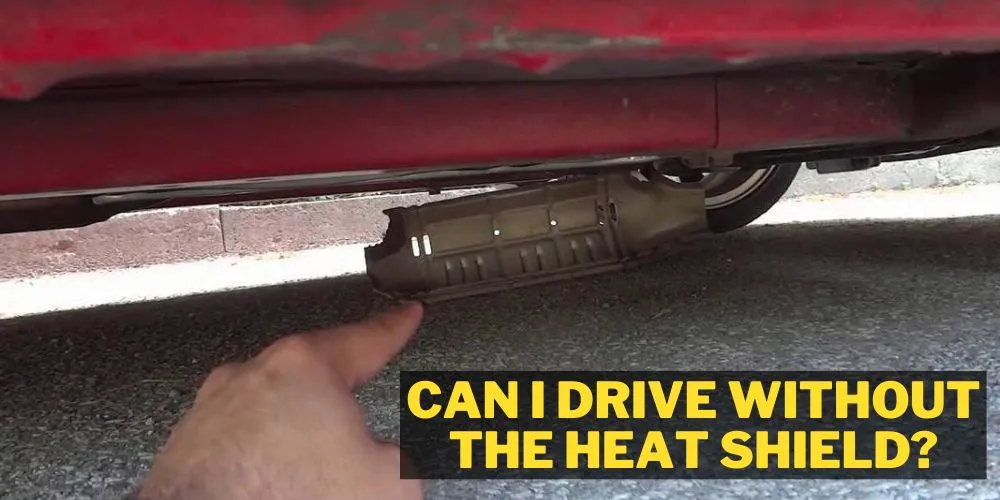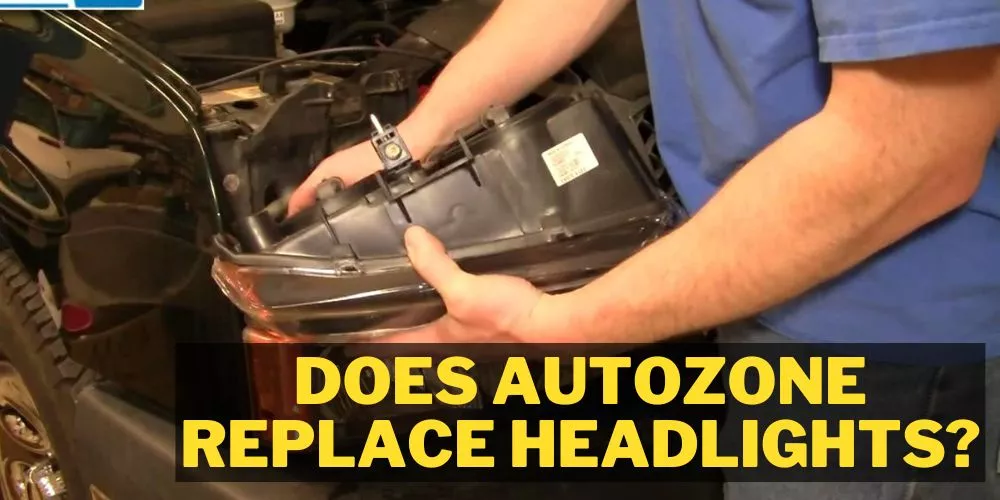A wheel speed sensor is a device that reads the wheel rotation speed of any vehicle. It comprises a gear wheel and pickup.
A wheel speed sensor is responsible for controlling the traction and is one of the crucial parts of the anti-lock braking technique. They continuously track the wheel speeds and communicate that information to the ABS controller.
But, can a wheel speed sensor cause limp mode?
A wheel speed sensor may not cause the vehicle to go into limp mode, but other issues may arise, forcing the car to go into limp mode.
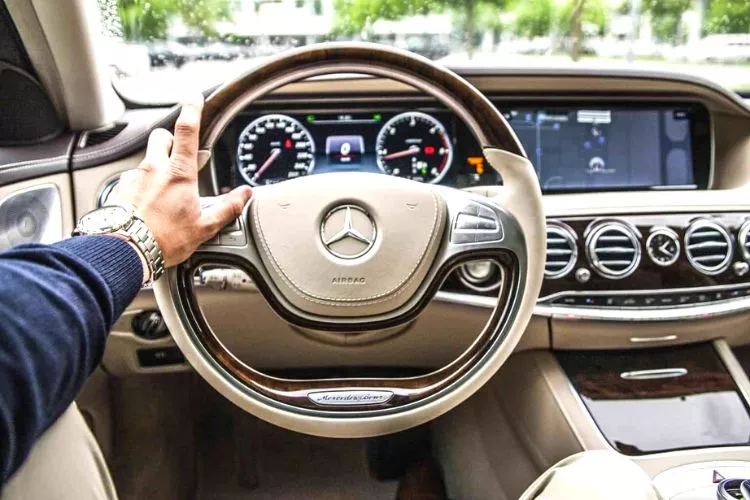
Whenever you notice an unstable engine while accelerating the car, it may be due to the car being in limp mode. In addition, you may also notice instability and the transmission system and won’t drive at higher speeds.
Thanks to the computerized system in modern cars, that activates the limp mode. Whenever your car goes into limp mode, there are some simple solutions to get out the car of the limp mode.
You may pull over the car to the roadside and allow it to rest for 1 to 2 minutes or call the service mechanic to get the car out of limp mode.
Let’s understand further how our detailed research on the topic will help you to understand car limp mode issues and how to overcome the problem.
Contents
What happens when your wheel speed sensor goes out?
The wheel speed sensor sends data to the ABS and is used by other systems also to keep the car running smoothly. A faulty wheel speed sensor may send incorrect data to the ABS and traction control unit, putting the computerized system in a doubtful situation and compelling it to display warning signs.
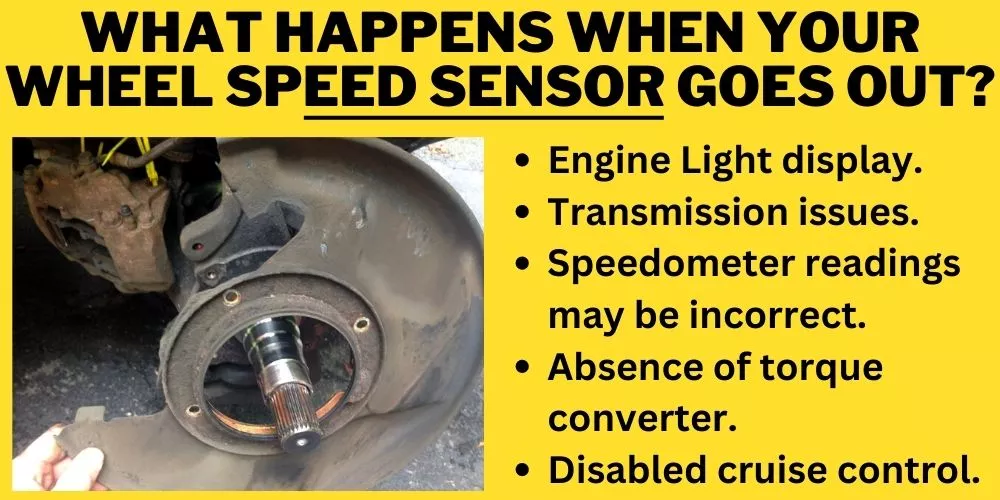
With a bad wheel speed sensor, the ABS may analyze the problem as a problem with the traction control unit. The following problems may occur due to a faulty wheel speed sensor.
Engine Light display
In the case of a faulty wheel speed sensor, the dashboard may display warning lights. Keep ready with an OBD-2 scan tool to identify whether the code indicates a problem with the wheel speed sensor. The system may also display warning lights for failed ABS and traction control systems.
Transmission issues
The wheel speed sensor sends vehicle speed data to the TCM (transmission control module) to decide the shift timings. In the case of faulty wheel speed sensor, incorrect data may lead to miscalculation in the timings of shifting the gears.
Typically an uncommon working of the automatic transmission indicates malfunctioned speed sensor. You may experience a delay in the shifts, or the transmission shift going hard, and limitations in operating the gears.
Speedometer readings may be incorrect
In many vehicles, the preliminary information for operating the speedometer comes from the automobile speed sensor. In the case of a faulty wheel speed sensor, the reading on the speedometer may be wrong, or in some cases, there may not be any readings at all.
It is unsafe to drive the car unaware of the driving speed.
Absence of torque converter
With no appropriate data from the wheel speed sensor, the torque converter may not apply the clutch, failing to form a motorized connection between the transmission and the engine. It will further cause slipping and overheating of the transmission system with reduced mileage.
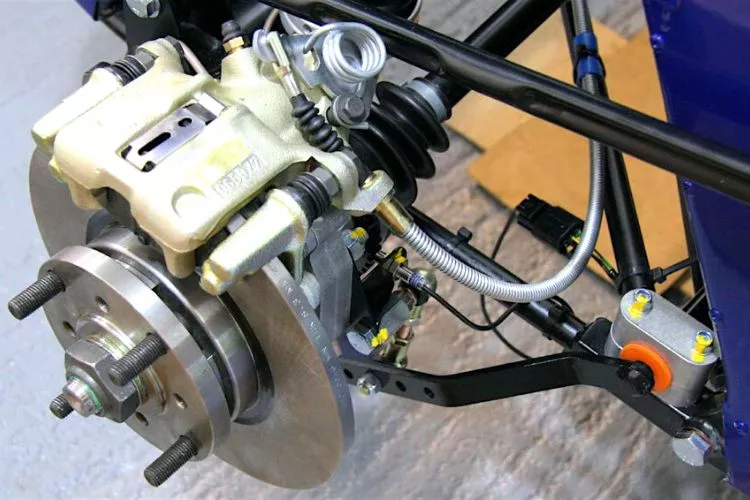
Disabled cruise control
If your car has cruise control, you won’t be able to engage the cruise control as the malfunctioned wheel speed sensor doesn’t send the required data to the PCM (powertrain control module). This data is crucial for a car’s steady speed.
Can a wheel speed sensor cause limp mode?
The straight answer to this question is “No.”
However, incorrect and unpredictable data from the wheel speed sensors may compel the ABS to decode it differently, which may be due to loss of traction or stability, and display the “traction limited” warning light on your dashboard.
A defective wheel speed detector won’t allow you to drive at higher speeds, but the limp mode isn’t triggered yet, as in the real scenario. Limp mode forces your car to work with limited functionality, as the computerized systems try to alert you to correct possible damage identified in your vehicle.
What are the signs of a bad wheel speed sensor?
Faulty sensor results in the ABS malfunctioning or entirely it stops working. It may display a few warning signs due to the faulty wheel speed sensor.
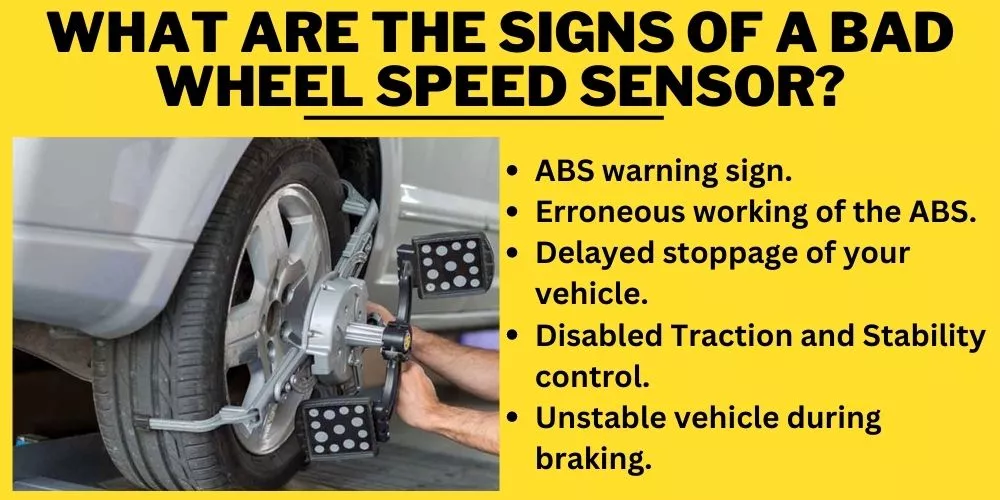
ABS warning sign
If the ABS light will continuously display while driving indicates some issue with your ABS. A faulty wheel sensor can’t provide the correct data to the system and hence the illumination of the ABS alert sign.
Erroneous working of the ABS
It’s risky to drive with an incorrect ABS, giving you wrong information about the running speed, which may prove fatal if ignored.
Delayed stoppage of your vehicle
A wheel speed sensor teams up with the braking system that enables stoppage of the car quickly whenever you press the brakes hard. A faulty wheel speed sensor may disable this, forcing a delayed stoppage of your vehicle.
Disabled Traction and Stability control
Along with the antilock brakes, the stability and traction control systems also use the information provided by the ABS sensor, which it receives from the wheel speed sensors. A faulty wheel speed sensor may fail to activate these traction and stability control.
Unstable vehicle during braking
The ABS helps to lock the brakes to avoid skidding the vehicle when you apply brakes in an emergency. The ABS gets the correct data from the sensor to compute the brake pressure, thus preventing the locking-up of the wheels and loss of traction during emergency stops.
In the case of a faulty wheel speed sensor, there may be an increased probability of skidding the car due to the locking of the brakes, as it won’t be receiving the perfect data. It’s crucial to service your car at the earliest whenever you spot any of the above warning signs.
Will drive in limp mode damage the engine?
The limp mode is an early warning from the system to fix some of the problems detected by it. Though there’s no harm to the engine in driving the car in limp mode, delayed ignorance may lead to other issues, leading to expensive solutions.
How do I bypass limp mode?
Herewith are a few tips to bypass the limp mode.
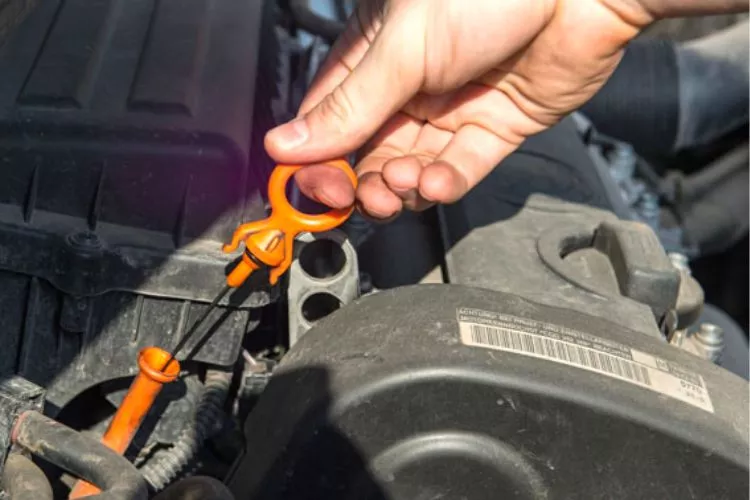
- Stop the car and switch it off for 5 to 10 minutes to reset the system. Restart the car and check all the gears from low to highest and vice versa. If no signs appear on the dashboard, you have successfully bypassed the limp mode.
- A loose internal connection may lead the car into activating limp mode. Stop the car aside, open the bonnet and disconnect the battery. After half an hour, reconnect the battery. This process will reset the transmission memory, which will result in deactivating the limp mode.
- Equip yourself with a car diagnostic scanner. It helps you to identify the exact reason why the car activated the limp mode. It may be for any reason, and sometimes just a false alarm from the system, that forces the car into the limp mode.
- Check for fluid leakage whenever a car goes into limp mode. Check for the levels and top it to the required amount if less. Ensure to fix the leaks, if any, before you start your car.
Can I drive with a broken wheel speed sensor?
Though you can drive with a broken wheel speed sensor, it’s unsafe to drive with it. Ignoring a small problem may lead to a massive one, which may prove fatal.
How do you diagnose a bad wheel speed sensor?
Let’s understand how to test a bad wheel speed sensor with a multimeter.
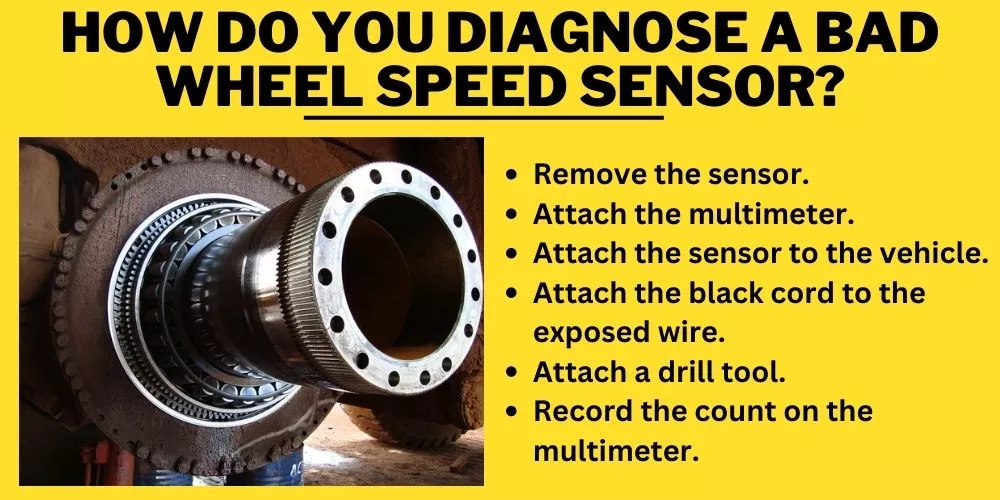
Remove the sensor
Remove the wheel speed sensor by unhooking the black and white colored wires. Once you notice a pull switch or a tab, press it, and the sensor will come out. Remove all other bolts or screws to loosen from the sensor before removing it. Gently remove it to prevent any damage.
Attach the multimeter
Join the black head and white head to the black and red terminal respectively. Gently thrust the leads into the spaces to connect there. Regulate the multimeter dial to set it to AC.
Attach the sensor to the vehicle
Connect the vehicle using black and white cords to the sensor. You can procure this set from any general auto spare parts shop. Securely plug the white and black wires into the sensor.
Attach the black cord to the exposed wire
Connect the black cord linked to the wheel speed detector to the exposed wire and the white cord linked to the detector to the red colored lead wire.
Attach a drill tool
Procure a drill tool to emulate the movement of the sensor. The drill tool should fit accurately to the wheel speed sensor. It helps in rotating the gear in it correctly.
Now connect a power drill to the drill tool. Ensure to fix it gently to prevent it from falling off. Now, you can spin the wheel speed sensor using the drill. Spin slowly initially and then escalate the speed until you get the correct reading.
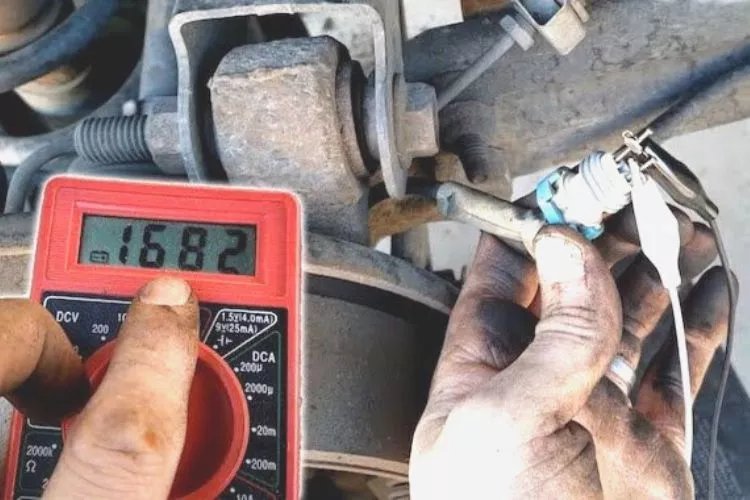
Record the count on the multimeter
If the numeral displayed on the multimeter screen is directly proportional to the increased speed, you can conclude the detector is working perfectly. In contrast, if it fails to correspond with the incrementing speed or doesn’t show any voltage, it’s a faulty sensor.
Frequently Asked Questions (FAQs)
How often should wheel speed sensors be replaced?
Ideally, replace it after every 1,00,000 miles read by your car.
How much does it cost to fix limp mode?
The cost may vary depending on the reason. If the limp mode is just due to refilling the transmission fluid, it will fall between $100 to $250.
Replacing the old sensor will the new sensor may range between $200 to $400, depending on the vehicle’s make and model.
How long can you drive a car with a bad speed sensor?
We would recommend driving the car only up to the service station to get the faulty piece fixed as early as possible. Not a good idea to travel to long places with a bad speed sensor.
Can a bad wheel speed sensor cause brake problems?
Yes, the anti-locking system may not work correctly, resulting in the car skid in some instances.
Conclusion
A wheel speed sensor is a crucial component of your vehicle. If it goes faulty, it may not put your car in limp mode but may give warning signs that you need to address immediately.
A malfunction in the wheel speed sensor may affect the traction and stability control, resulting in delayed breaking, an anti-locking system of the wheels, and various other issues.
It is not advisable to travel with a faulty wheel speed sensor. Incorrect data may put you and your family in danger.
Thanks to the computerized system in the car, that puts the car in limp mode, preventing further damage to the car, by alerting immediately whenever it doubts some issue happening with the wheel speed sensor.

